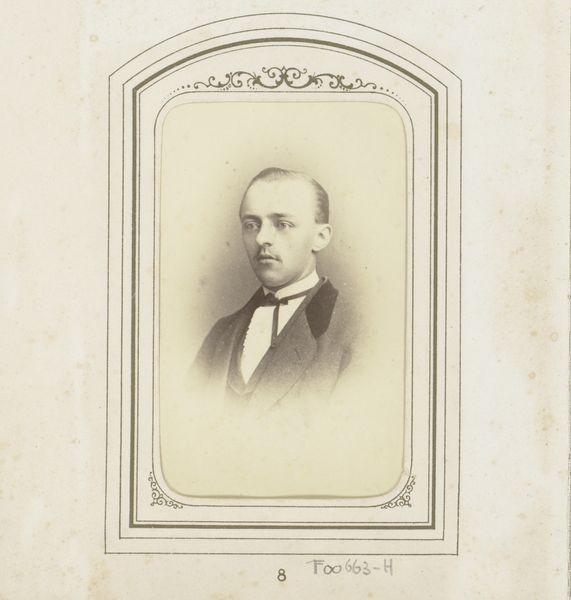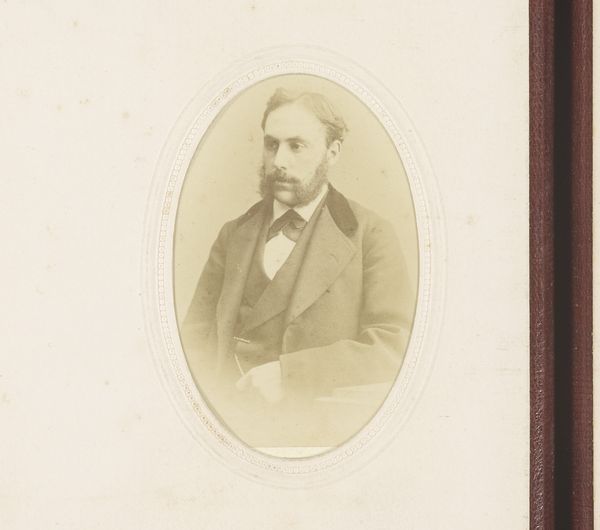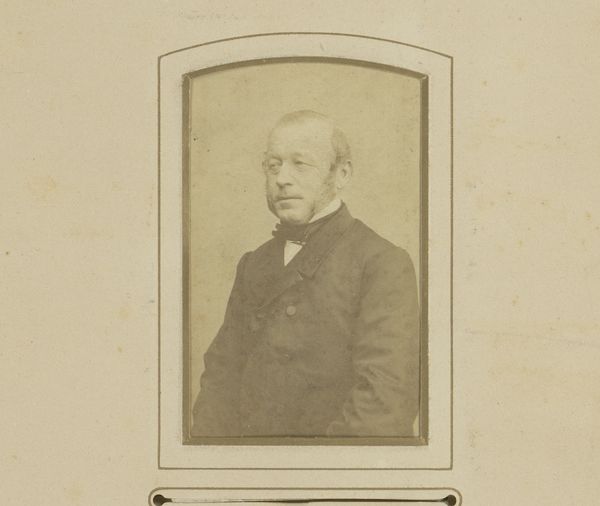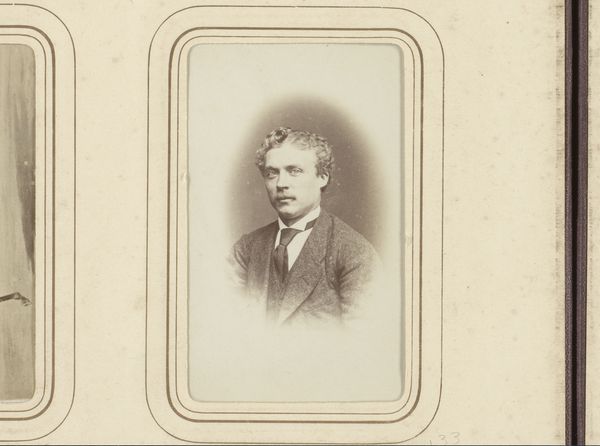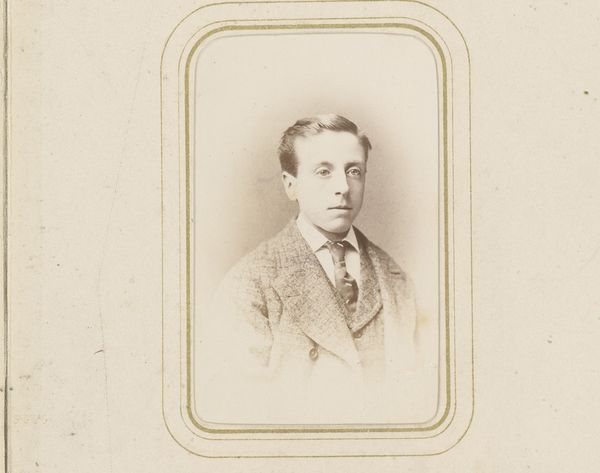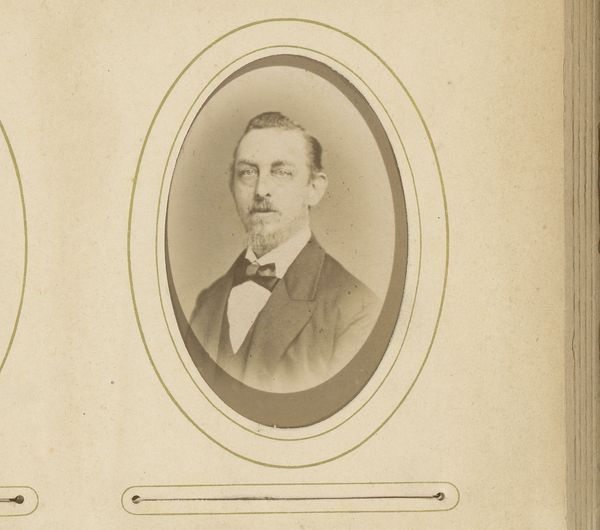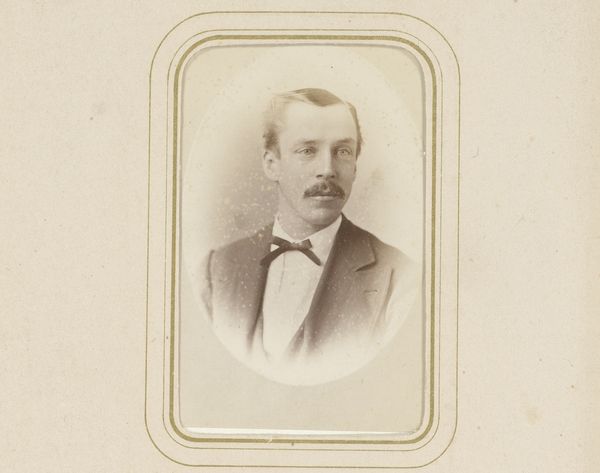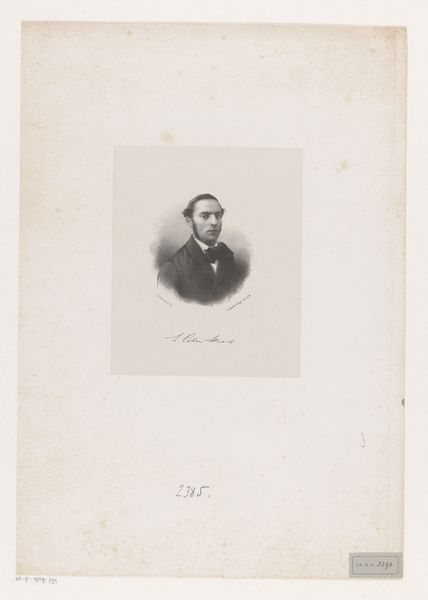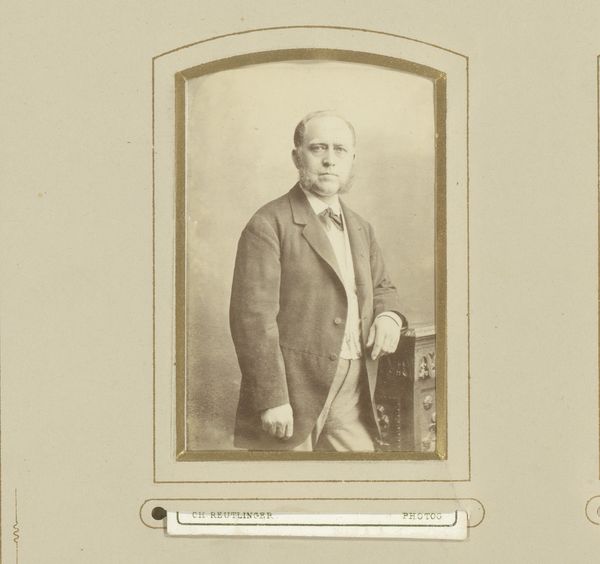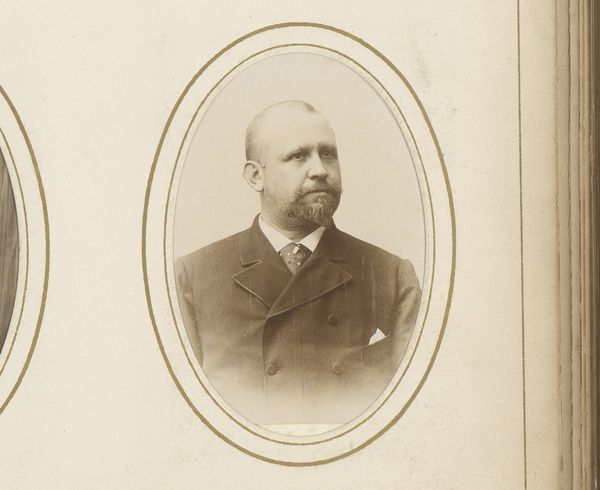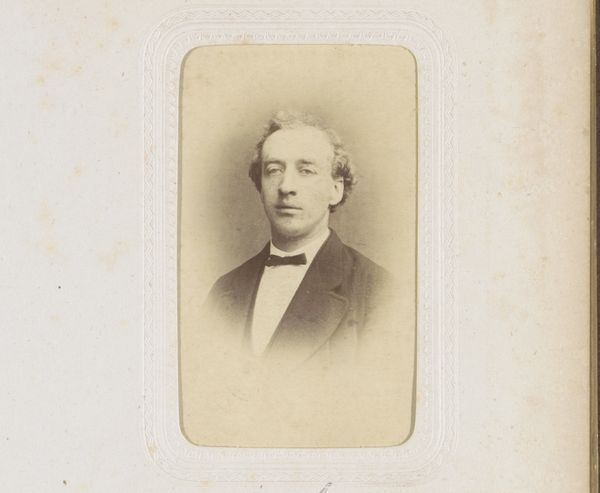
photography
#
pencil drawn
#
pencil sketch
#
charcoal drawing
#
photography
#
pencil drawing
#
portrait drawing
Dimensions: height 84 mm, width 53 mm
Copyright: Rijks Museum: Open Domain
Editor: Here we have a photograph, "Portret van een man met baard en bril", or "Portrait of a man with beard and glasses," dating roughly from 1863 to 1875, attributed to G. and R. Lavis. The muted tones give it an antique feel, and the subject looks quite scholarly. What do you see when you look at this piece? Curator: I'm struck by the photographic process itself. Think about the material conditions required to create this image back then: the specific chemistry, the long exposure times, the heavy equipment. Photography wasn't ubiquitous; it was a deliberate act involving skilled labor. How did this impact the subject's pose, their choice of clothing, the very presentation of self? Editor: That’s a great point. The framing, even the slight blurriness, emphasizes the handcrafted nature of early photography. It’s less about capturing a fleeting moment and more about constructing an image. Curator: Exactly. The creation of such an image was labour-intensive. It's not merely a snapshot, but a commodity produced within a particular social and economic context. And who were G. and R. Lavis? Understanding their studio practices and clientele tells us about the market for portraiture at that time, and where the work sits within broader historical contexts. How do we think about the consumption and exchange of photographic portraiture? Editor: It almost feels like a collaboration between the subject and the photographer. The man’s serious expression seems to hint at the gravity of the process. Curator: And what does that say about the sitter's class position, and his understanding of this technology, considering the portrait itself as both document and commodity? Editor: This really opens my eyes to thinking about art beyond just what is depicted. Considering the material processes involved is very helpful! Curator: Indeed. By looking at the materials and social contexts, we move beyond just aesthetic appreciation and towards a richer, more critical understanding.
Comments
No comments
Be the first to comment and join the conversation on the ultimate creative platform.
